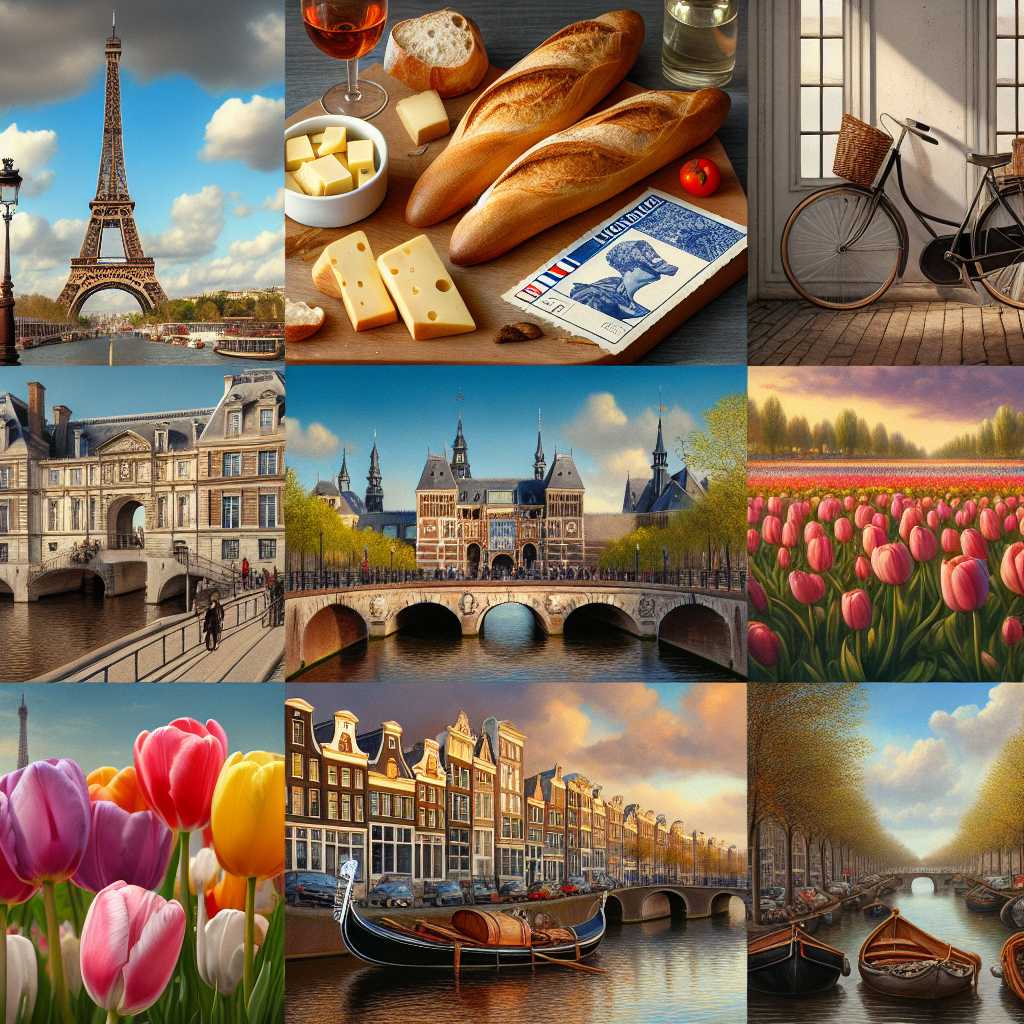Exploring the Historical and Cultural Differences between France and the Netherlands
When delving into the narratives of European history and culture, France and the Netherlands stand out as two countries of significant interest. Although proximate geodeographically, they have taken distinct paths throughout history, shaping their cultural identities, economic developments, political landscapes, and societal structures in diverse ways. This article aims to explore the differences and distinctions between these two countries from a neutral perspective, providing insights into their unique characteristics.
Historical Contexts: Divergent Paths Through Time
France, with its ancient roots stemming from the Gaulish tribes and subsequent Roman control, has long been a central player in European history. It has experienced significant eras, such as medieval feudalism, the transformative French Revolution, the Napoleonic Era, and two World Wars. The French Republic today is marked by its rich historical pathways that have shaped its commitment to “liberté, égalité, fraternité” – liberty, equality, fraternity.
The Netherlands, in contrast, illustrates a different trajectory. Originally part of the Holy Roman Empire and later under Spanish rule, it won its sovereignty in the late 16th century during the Eighty Years’ War. The Dutch Golden Age marked its height as a maritime superpower, acclaimed for its advancements in trade, science, military prowess, and art. Present-day Netherlands stands testament to these influences alongside its repute for social liberalism.
Cultural Identity: Tradition Meets Modernity
French culture is often celebrated for its contributions to art, philosophy, cuisine, and fashion. From the Impressionist movement to Cartesian rationalism, haute cuisine to haute couture, French cultural elements have become globally recognized symbols. Emphasis on secularism (‘laïcité’) plays a significant role in the public life of French citizens.
Dutch culture boasts its own richness characterized by pragmatic tolerance, openness to international influences, famous painters like Rembrandt and Van Gogh, as well as a distinctive architectural style. Additionally, the Netherlands is noted for innovating in fields such as water management – considering much of its landmass is below sea level – and social policies that often favor progressive stances on issues such as drug use and end-of-life care.
Political Structures: Governance Across Borders
The political framework of France is a semi-presidential representative democratic republic. It combines presidential and parliamentary systems; the President holds substantial executive power while the Prime Minister heads the Government. French politics often revolve around a broad spectrum of ideologies with secular republican values at their heart.
The Netherlands practices a parliamentary representative democracy with a constitutional monarch. The monarch’s role is largely ceremonial while executive power lies with the Council of Ministers led by the Prime Minister. Dutch politics are widely known for their multiparty system and coalition governments that promote consensus politics.
Economic Perspectives: Gearing Towards Future Prosperity
In economic terms, France boasts one of the largest economies in Europe and globally, driven by diverse sectors from agriculture to technology and services. It benefits from sizable industrial outputs and sophisticated infrastructure leading to its influence as a key global economic player.
The Netherlands showcases an open economy heavily reliant on foreign trade. Known for its strong financial services sector and logistic prowess thanks to Rotterdam port – one of the busiest ports in the world – it maintains a robust competitive stance within the global market.
Social Issues: Addressing Modern Challenges
Both nations tackle various social challenges pertaining to immigration, integration of minorities, economic disparities among regions and people, education reform, and health care sustainability. They each seek solutions considering their social histories and current public attitudes iteratively shaping social policy discourse and legislation.
Notes
France population (2023 estimate):
Approximately 67 million people.
Netherlands population (2023 estimate):
Approximately 17 million people.
Head of State (France):
President
Head of State (Netherlands):
King
Capital cities:
Paris (France), Amsterdam (Netherlands).
Official languages:
French (France), Dutch (Netherlands).
EU membership:
Both are member states of the European Union.
Image Description: A collage displaying prominent cultural symbols from France and the Netherlands. From France’s side: an image of the Eiffel Tower, a freshly-baked baguette paired with cheese and wine, classic French art at the Louvre Museum entrance ticket circa early 20th century represented by artwork not protected by copyright. For the Netherlands: images of colorful tulip fields below clear skies surrounded historically significant architecture at Amsterdam’s canal district with bicycles leaning on a bridge railing illustrative still captured about traditional Dutch wooden clogs as well respected paintings from Dutch Masters recognizable even without showing copyrighted elements or details such as brushstrokes or signatures.

